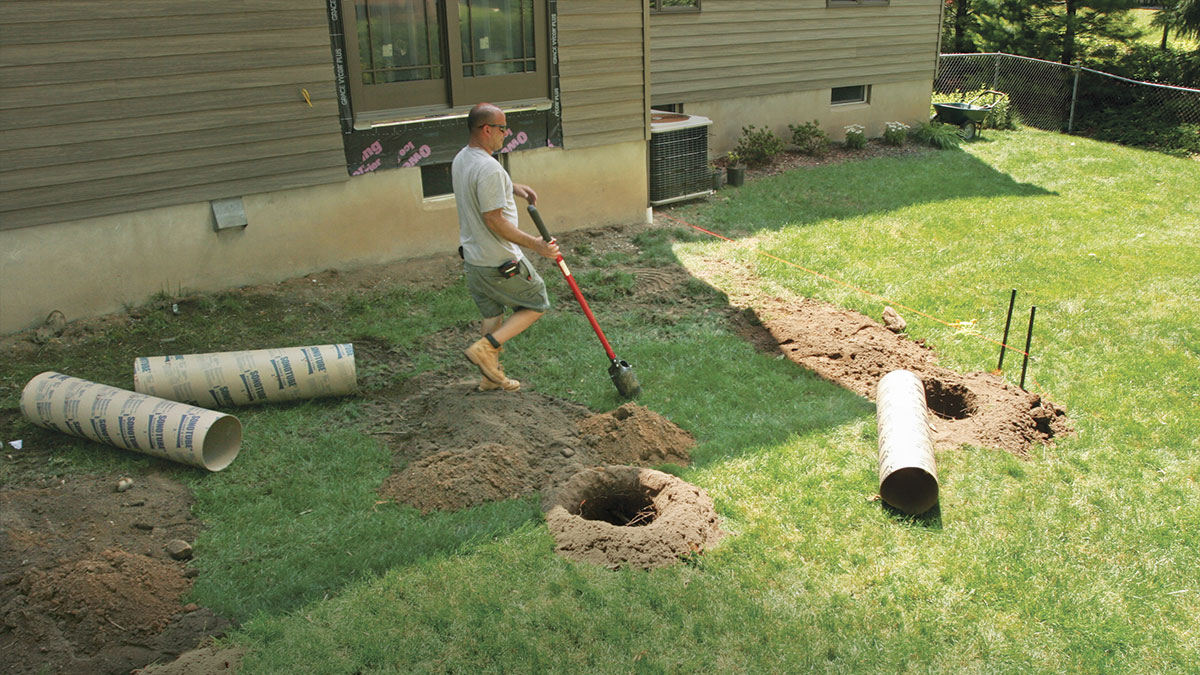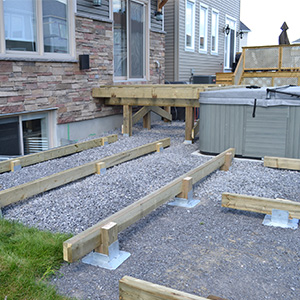Secure Foundations, Lasting Impressions: Grasping the Art of Deck Footings Setup
Wiki Article
Choosing the Right Deck Footings for Stability and Longevity
The durability and safety of your deck depend greatly on the type of footings you pick, as they give the crucial support and stability to withstand the test of time. In this conversation, we will certainly explore the different types of deck grounds, think about the essential elements to consider when making a choice, and dig right into the pros and disadvantages of various options.Kinds Of Deck Footings
There are numerous types of deck grounds that can be used, each offering distinct benefits and considerations. One usual sort of ground is the concrete pier footing. These footings include a round opening filled up with concrete, which offers a strong structure for the deck blog posts. Concrete pier grounds are reasonably very easy to set up and offer exceptional stability, making them a popular choice for many deck projects.Another kind of footing is the helical pile footing. Helical heaps are steel shafts with helical plates connected to them. These footings are mounted by screwing them right into the ground, which creates a safe foundation for the deck. Helical stack footings are ideal for locations with difficult soil conditions, as they can be installed in almost any kind of kind of dirt. They also permit simple modification and progressing of the deck if needed.
Conversely, some home builders go with precast concrete grounds. These footings are made from durable concrete and can be found in numerous sizes and shapes to accommodate various deck layouts. Precast concrete footings are convenient to mount and give a secure base for the deck framework.
Ultimately, another choice is the post-in-anchor footing system. This kind of footing includes driving a metal support right into the ground and affixing it to the deck post. It provides flexibility in regards to positioning the deck articles and is appropriate for decks with lightweight frameworks.
When choosing the best kind of deck footing, it is important to consider aspects such as dirt problems, deck tons, and regional building ordinance (Deck Footings). Consulting with a specialist service provider or structural designer can assist guarantee the ideal footing is chosen for a stable and secure deck
Factors to Think About When Choosing Footings
When selecting the appropriate grounds for a deck, it is critical to very carefully consider numerous factors such as soil problems, deck tons, and adherence to local building codes. These aspects play a significant duty in ensuring the stability and resilience of the deck structure.One of the main aspects to think about is the soil conditions. The kind of dirt on which the deck will certainly be constructed identifies the sort of footings needed. For circumstances, decks built on loose or sandy dirts might call for deeper grounds to offer sufficient assistance and protect against settling. On the other hand, decks improved clay or extensive soils may need grounds that can suit the dirt's propensity to broaden and agreement.
Another important variable is the deck tons. The weight of the deck, consisting of the materials used and any kind of possible online loads such as furnishings or events, must be thought about when picking footings. The grounds have to be made to bear the weight of the deck and distribute it equally to stop any kind of structural issues or failings.
Finally, adherence to local structure codes is extremely important. Building ordinance vary from area to region, and it is important to adhere to the specific needs established by the local authorities. Deck Footings. These codes ensure that the deck is constructed safely and meets the essential requirements for structural honesty and load-bearing capacity
Concrete Grounds: Disadvantages and pros

When utilized as the foundation for a deck,Concrete grounds use numerous benefits and drawbacks. On the silver lining, concrete grounds provide outstanding security and durability. Concrete is a strong and inflexible material that can support heavy tons and hold up against various weather condition problems. It additionally has a lengthy life-span, making it a trustworthy selection for lasting use.
Another benefit of concrete footings is their adaptability. They can be poured into different shapes and dimensions to suit different deck layouts and configurations. Concrete grounds can be customized to fit the details requirements and needs of the deck framework.
Nonetheless, there are also some disadvantages to using concrete footings. One major drawback is the expense and labor entailed in their installment. Concrete grounds need excavation and often require the aid of hefty machinery. This can increase the total price of the deck job and may require specialist aid.

Helical Piers Vs. Sonotubes: Which Is Better?
In thinking about the structure choices for a deck, the comparison between helical piers and sonotubes is important in figuring out the exceptional choice. They are twisted right into the ground utilizing hydraulic machinery, offering a stable and sturdy foundation for the deck.When it concerns stability and durability, helical piers have the top hand. The helical plates on the piers develop a solid hold with the soil, avoiding any movement or shifting of the deck. This is specifically useful in areas with unstable or shifting dirt problems. Sonotubes, on the other hand, depend entirely on the concrete filling up for stability, which may not offer the very same degree of stamina and resistance.
In regards to installation, helical piers are reasonably much easier and faster to install contrasted to sonotubes. The hydraulic machinery made use of to twist the piers right into the ground ensures a fast and efficient process. Sonotubes, on the other hand, require excavating holes and putting concrete, which can be time-consuming and labor-intensive.
Additionally, helical piers are a more versatile choice. They can be made use of in different dirt conditions and can be readjusted or reinforced if required. Sonotubes, on the various other hand, may navigate here need extra assistance, look these up such as rebar, in certain dirt problems or areas with high load demands.
Selecting the Right Footings for Your Deck's Dimensions
For optimal structural integrity, it is crucial to meticulously select the proper footings that align with the dimensions of your deck. The measurements of your deck, including its length, elevation, and size, play a substantial role in establishing the type and size of footings required.When selecting grounds for your deck, it is essential to consider the load-bearing capacity of the soil. The weight of the deck, incorporated with the weight of any kind of furnishings or individuals on it, applies a substantial force on the footings (Deck Footings). It is essential to choose footings that can adequately support this weight without moving or sinking over time.
The size and shape of the grounds should additionally be thought about. Larger decks with higher measurements call for bigger footings to give sufficient security and support. The form of the footings, whether they are round or square, relies on the design and format of the deck. Additionally, the depth at which the grounds are set up must be figured out based upon the frost line in your area to stop any type of heaving or shifting because Click This Link of freezing temperatures.
Final Thought
In final thought, selecting the right deck grounds is important for making sure stability and longevity. Factors such as the type of grounds, the deck's measurements, and the pros and cons of various choices ought to be considered.These grounds are composed of a cylindrical opening filled up with concrete, which provides a solid foundation for the deck posts. Concrete pier grounds are reasonably easy to set up and use exceptional security, making them a popular choice for numerous deck tasks.
Precast concrete grounds are practical to install and give a secure base for the deck structure.
It provides versatility in terms of placing the deck messages and is ideal for decks with lightweight structures.
Concrete grounds offer a number of benefits and drawbacks when made use of as the structure for a deck.
Report this wiki page